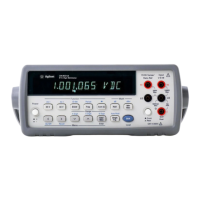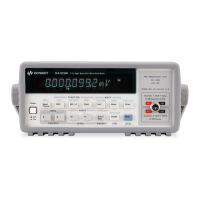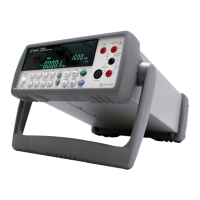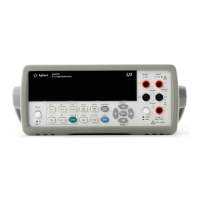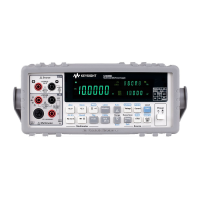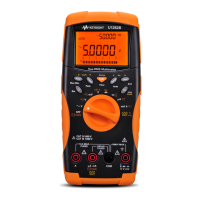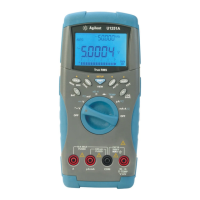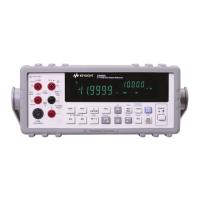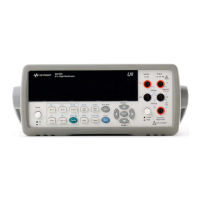124 Chapter 4 Making Measurements
10 OUTPUT 722;"PRESET NORM" !PRESET,NRDGS 1,AUTO, DCV 10, TRIG SYN
20 OUTPUT 722;"MEM FIFO" !ENABLE READING MEMORY, FIFO MODE
30 OUTPUT 722;"SMATH MIN 9" !LOWER LIMIT = 9(V)
40 OUTPUT 722;"SMATH MAX 11" !UPPER LIMIT = 11(V)
50 OUTPUT 722;"CSB" " !CLEAR STATUS REGISTER
60 OUTPUT 722;"RQS 2 !ENABLE HI/LO STATUS REGISTER BIT
70 OUTPUT 722;"NRDGS 20" !20 READINGS/TRIGGER
80 OUTPUT 722;"TRIG SGL" !TRIGGER READINGS
90 OUTPUT 722;"MMATH PFAIL" !PERFORM POST-PROCESS PFAIL OPERATION
100 OUTPUT 722;"STB?"; !QUERY SET BITS IN STATUS REGISTER
110 ENTER 722; A !ENTER QUERY RESPONSE
120 IF BINAND(A,2) THEN !IF BIT 2 IS SET:
130 PRINT "Hi/LOW LIMIT TEST FAILED" !PRINT FAILURE MESSAGE
140 OUTPUT 722;"RMATH PFAILNUM" !QUERY PFAILNUM REGISTER
150 ENTER 722; B !ENTER QUERY RESPONSE
160 PRINT "NUMBER OF READINGS THAT PASSED BEFORE FAILURE WERE";B
165 !PRINT PFAILNUM RESPONSE
170 ELSE !IF BIT 2 WAS NOT SET:
180 PRINT "HI/LOW LIMIT TEST PASSED" !PRINT TEST PASSED MESSAGE
190 END IF
200 END
FILTER The filter math operation simulates the output of a single pole, low pass, RC
filter. This allows you to reduce the effects of random noise while preserving
long term trends. The equation is:
Result = (Previous Result)×(DEGREE-1)/DEGREE + Reading/DEGREE
Where:
Previous Result is initially set to the value of the first reading and thereafter
is set to the result of this FILTER operation.
Reading is any reading.
DEGREE selects the step response of the filter.
The value of DEGREE corresponds to the step response of the low-pass filter.
That is, if 20 is the value of DEGREE, 20 readings are required for the step
response to achieve 63% of its final value. You can achieve slower response
or quieter readings by increasing the value of DEGREE. The actual time
constant (R×C) of the filter can be determined by:
Where:
t = the time constant (R×C)
f
s
= the sampling rate which is: l/timer interval (when using the TIMER and
NRDGS commands) or l/effective interval {when using the SWEEP
command). If you are not using the TIMER or SWEEP command, refer to
"Determining the Reading Rate" earlier in this chapter.
If DEGREE is larger than 10, (R×C) can be approximated by:
t
» (l/f
s
) × DEGREE
t
1
f
s
---
1
DEGREE
DEGREE 1–
-------------------------------
ln
-------------------------------------1–=
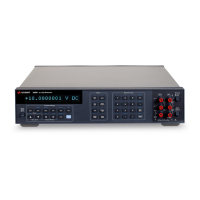
